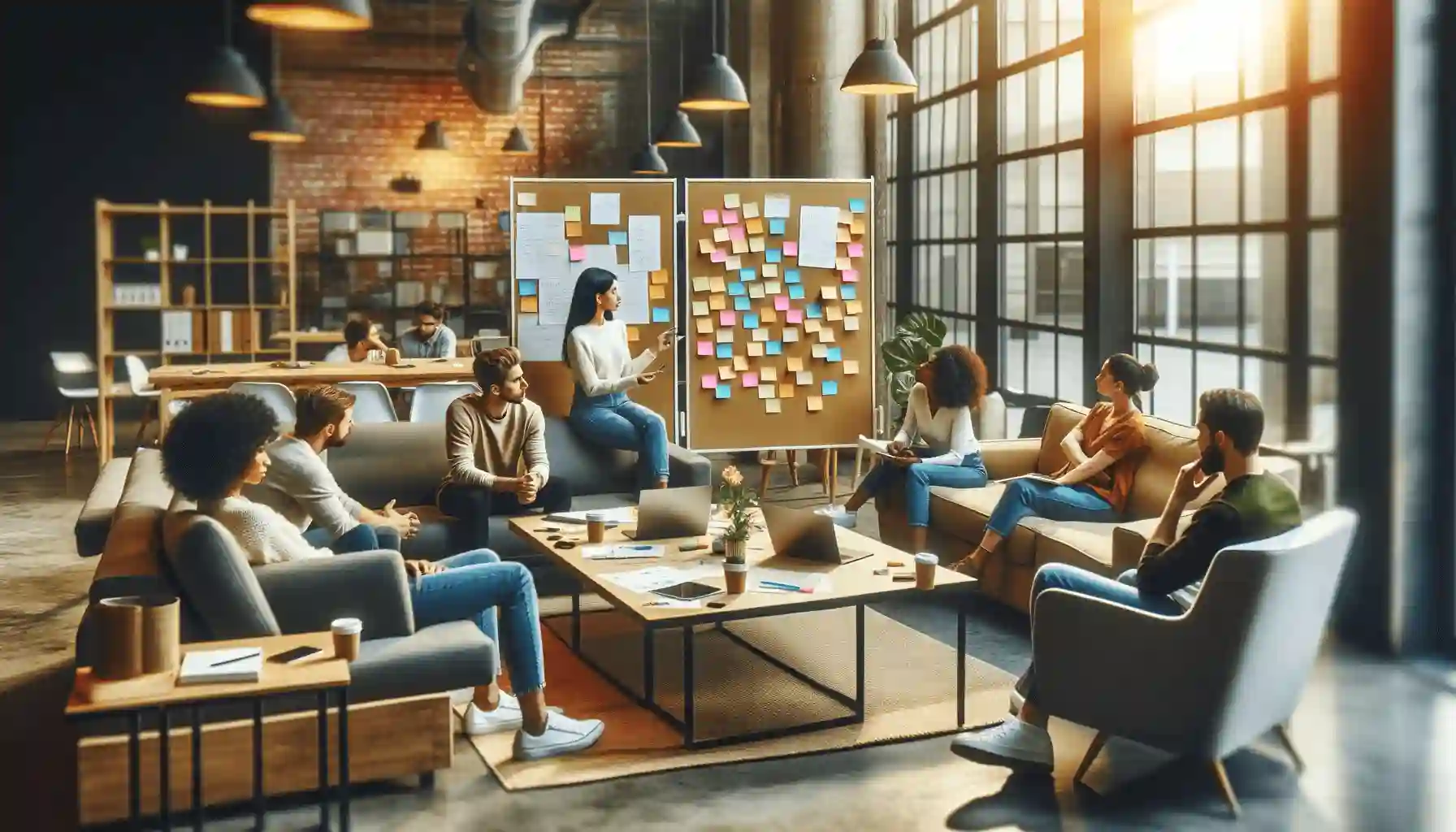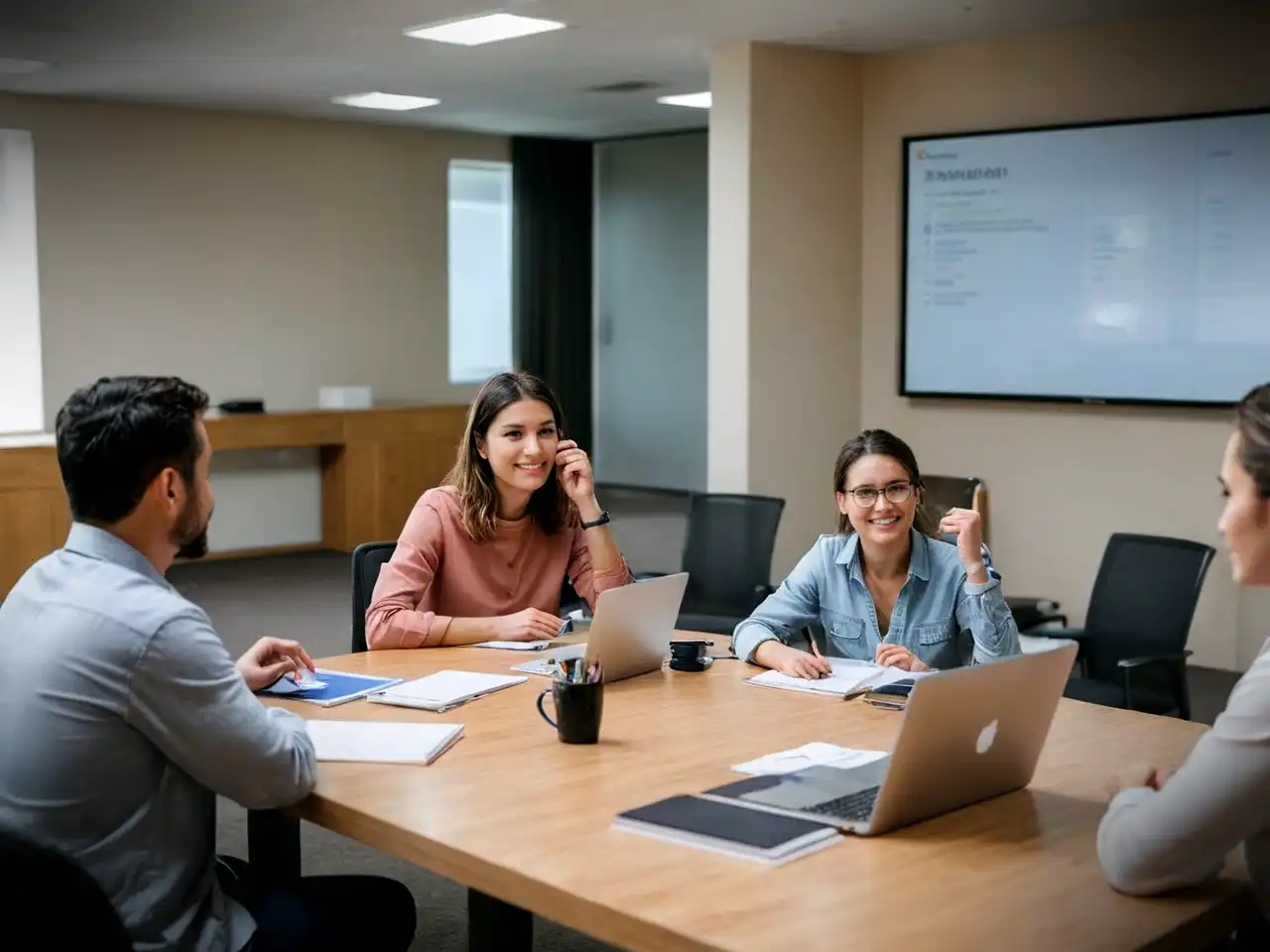Brown Bag Meeting
This guide will walk you through the essential elements of use brown bag meeting to keep your attendees aligned and engaged.
Try Lark for Free
Brown bag meetings, often called lunch-and-learn sessions, provide a casual yet effective platform for employees to gather during lunchtime and share knowledge, insights, and experiences. These meetings promote continuous learning, team collaboration, and the exchange of valuable information. In this comprehensive guide, we'll delve into the significance of brown bag meetings, how to organize them, and tips for maximizing their impact.
Use Lark Meetings to turn meetings into true collaborative experiences.
What is a brown bag meeting?
Understanding Brown Bag Meetings
A brown bag meeting, also known as a lunch-and-learn session, is an informal gathering where employees come together during their lunch break to discuss, share, and learn about various topics. These meetings typically involve a presentation or discussion led by one or more team members or invited experts.
Goals of a brown bag meeting
Fostering Knowledge Sharing and Collaboration
The primary goals of a brown bag meeting include:
- Knowledge Sharing: Providing a platform for employees to share their expertise, experiences, and insights.
- Team Collaboration: Enhancing teamwork and cross-functional communication.
Who should attend a brown bag meeting?
Open to All Employees
Brown bag meetings are typically open to all employees within an organization. Participants include:
- Team Members: Employees from different departments and levels.
- Presenters: Employees or invited experts leading the session.
- Interested Attendees: Those who wish to learn and engage in the discussion.
Related:
Unlock the Power of Webinars: A Comprehensive Guide to Boost Your Business | Lark Blog | Lark BlogLearn more about Lark x Meetings
Topics, agenda, and structure of a brown bag meeting
Structuring the Meeting
A well-structured brown bag meeting usually includes the following components:
- Welcome and Introductions: Welcoming attendees and introducing the presenter(s).
- Presentation or Discussion: The core content, which can be a presentation, workshop, or open discussion.
- Q&A Session: Allowing attendees to ask questions and seek clarifications.
- Knowledge Sharing: Encouraging participants to share their experiences or insights related to the topic.
- Wrap-Up and Next Steps: Summarizing key takeaways and mentioning any follow-up actions or future sessions.
How to organize a brown bag meeting?
Step-by-Step Guide
Organizing a successful brown bag meeting requires careful planning and execution. Follow these steps to organize and conduct an effective session:
- Choose a Topic: Select a relevant and engaging topic for the session.
- Identify Presenters: Find employees or experts knowledgeable about the chosen topic.
- Set a Date and Time: Schedule the meeting during a lunch break or convenient time.
- Promote the Meeting: Communicate the meeting's details and agenda to all employees.
- Prepare Materials: Ensure presenters have the necessary materials, such as slides or handouts.
- Facilitate the Meeting: Begin the session on time, moderate discussions, and encourage participation.
- Encourage Interaction: Foster interaction through questions, discussions, and knowledge sharing.
- Collect Feedback: After the session, gather feedback to improve future brown bag meetings.
- Follow-Up: If necessary, schedule follow-up sessions or actions based on the discussion.
Learn more about Lark x Meetings
How often should you hold brown bag meetings?
Meeting Frequency
The frequency of brown bag meetings can vary based on organizational culture and objectives. Common frequencies include:
- Monthly: Holding sessions once a month to maintain regular knowledge sharing.
- Quarterly: Offering sessions every quarter to delve into deeper topics.
- As Needed: Scheduling meetings as specific topics or opportunities arise.
Key benefits of brown bag meetings
Understanding the Value
Brown bag meetings offer several benefits to organizations and employees:
- Continuous Learning: Employees have the opportunity to expand their knowledge and skills.
- Knowledge Sharing: Encourages employees to share their expertise and experiences.
- Team Building: Fosters collaboration and a sense of community among team members.
- Efficient Use of Time: Utilizes lunch breaks for productive learning and discussion.
Learn more about Lark x Meetings
Common pitfalls of brown bag meetings
Avoiding Mistakes
To ensure the success of brown bag meetings, be mindful of these common pitfalls:
- Lack of Preparation: Poorly organized sessions may lack direction and engagement.
- Irrelevant Topics: Choosing topics that do not resonate with the audience.
- Low Attendance: Failing to promote meetings or schedule them at inconvenient times.
Tips for maximizing the impact of brown bag meetings
Enhancing Effectiveness
To make the most of brown bag meetings, consider implementing these tips:
- Diverse Topics: Offer a variety of topics to cater to different interests and learning needs.
- Interactive Sessions: Encourage active participation and discussions.
- Feedback Mechanism: Collect feedback to continually improve the quality of sessions.
- Recognition: Acknowledge and appreciate presenters for their contributions.
Learn more about Lark x Meetings
Examples
Real-world scenarios
Real-world scenarios
Let's explore three real-world scenarios of successful brown bag meetings in various contexts:
Scenario 1: Marketing Insights Brown Bag Meeting
Brief Content: A marketing department organized a brown bag meeting focused on digital marketing trends and insights. The session featured a presentation by a seasoned digital marketer, followed by a lively discussion.
Detailed Content: The meeting began with a warm welcome and introductions, followed by a presentation on the latest digital marketing trends, best practices, and case studies. Attendees actively participated by asking questions and sharing their experiences with digital marketing. The meeting concluded with a knowledge-sharing segment where team members shared their successes and challenges in implementing digital strategies.
Scenario 2: Tech Innovation Lunch-and-Learn
Brief Content: An IT department held a lunch-and-learn session to explore emerging technologies and their potential impact on the organization. A subject matter expert led the discussion.
Detailed Content: The session kicked off with introductions and a brief overview of the importance of staying updated on technology trends. The presenter discussed key innovations such as artificial intelligence, blockchain, and cybersecurity. The engaging Q&A session allowed participants to delve deeper into specific topics. The meeting wrapped up with attendees expressing their interest in exploring specific technologies further and plans for future sessions.
Scenario 3: Wellness and Stress Management Lunch Session
Brief Content: An HR department organized a lunch session to promote employee wellness and stress management. A licensed therapist led the session, focusing on practical tips for stress reduction.
Detailed Content: The meeting commenced with a warm welcome and a brief discussion on the importance of mental health and stress management. The therapist presented evidence-based strategies for managing stress, including mindfulness techniques and relaxation exercises. Attendees actively participated in guided relaxation exercises. The meeting ended with employees expressing gratitude for the session and discussing their personal
strategies for stress reduction.
Tips for do's and don'ts
Best Practices and Pitfalls to Avoid
Follow these do's and don'ts to ensure productive and effective brown bag meetings:
| Do's | Don'ts |
|---|---|
| Choose diverse and engaging topics. | Don't neglect to promote meetings or provide clear communication. |
| Encourage active participation and knowledge sharing. | Avoid selecting topics that are too technical or inaccessible to the audience. |
| Provide a comfortable and inclusive environment. | Neglect to collect feedback and make improvements based on suggestions. |
| Express appreciation for presenters and attendees. | Disregard the importance of time management and respecting lunch breaks. |
Learn more about Lark x Meetings
Faqs for brown bag meetings
1. What is a brown bag meeting?
- A brown bag meeting, also known as a lunch and learn or a lunchtime seminar, is an informal gathering held during lunch hours, where participants bring their meals and engage in discussions, presentations, or training sessions.
2. What is the primary purpose of a brown bag meeting?
- The primary purpose of a brown bag meeting is to facilitate learning, knowledge sharing, and team building in a relaxed and interactive setting while enjoying lunch.
3. What topics are commonly discussed in brown bag meetings?
- Brown bag meetings can cover a wide range of topics, including professional development, industry trends, project updates, skill-building, and presentations by guest speakers.
4. How are brown bag meetings organized, and who typically leads them?
- Brown bag meetings are often organized by team members or department heads who have expertise in the chosen topic. They can be formal presentations or open discussions.
5. Are brown bag meetings suitable for all types of organizations?
- Brown bag meetings can be adapted to suit various types of organizations, from corporate offices to educational institutions and nonprofit organizations, as they provide a flexible and cost-effective way to promote learning and collaboration.
6. What are the benefits of conducting brown bag meetings?
- Benefits include fostering a culture of continuous learning, building camaraderie among team members, sharing knowledge, and staying updated on industry developments.
7. How can organizers make brown bag meetings engaging and effective?
- To make brown bag meetings engaging, organizers should select relevant topics, encourage active participation, and create a welcoming and inclusive environment where attendees feel comfortable sharing and learning.
Conclusion
Brown bag meetings offer a unique opportunity for organizations to promote learning and team building in a relaxed and informal setting. By combining professional development with the convenience of a meal, these gatherings can enhance knowledge sharing and camaraderie among team members. Whether focused on skill-building or industry insights, brown bag meetings contribute to a culture of continuous learning.
Use Lark Meetings to turn meetings into true collaborative experiences.
A Game Changer for Brown Bag Meeting: Empower your team with Lark Meetings
In the fast-paced and dynamic world of modern business, effective communication and collaboration are crucial for success of Brown Bag Meeting. Here we introduce Lark Meetings to serve as a centralized hub for all communication needs.
Transform your meetings into collaborative endeavors
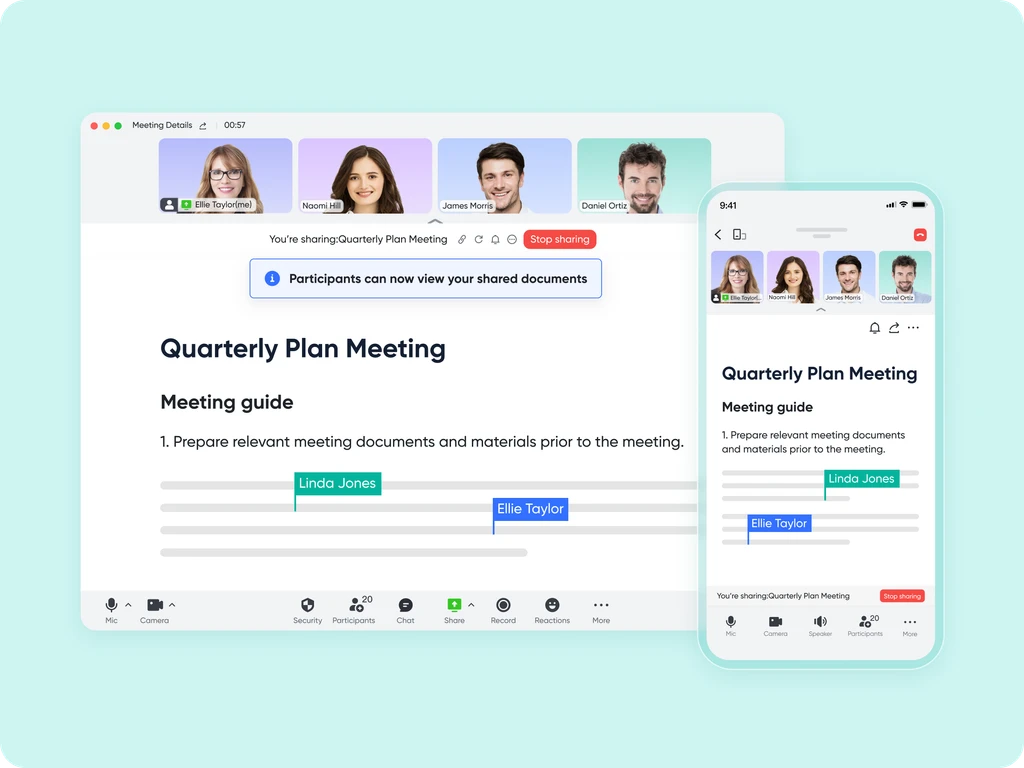
Leverage the potency of in-call document sharing, intelligent meeting minutes, and mobile-optimized features to enhance productivity collaboratively, irrespective of your location or schedule.
Seamlessly collaborate in real-time, across any device
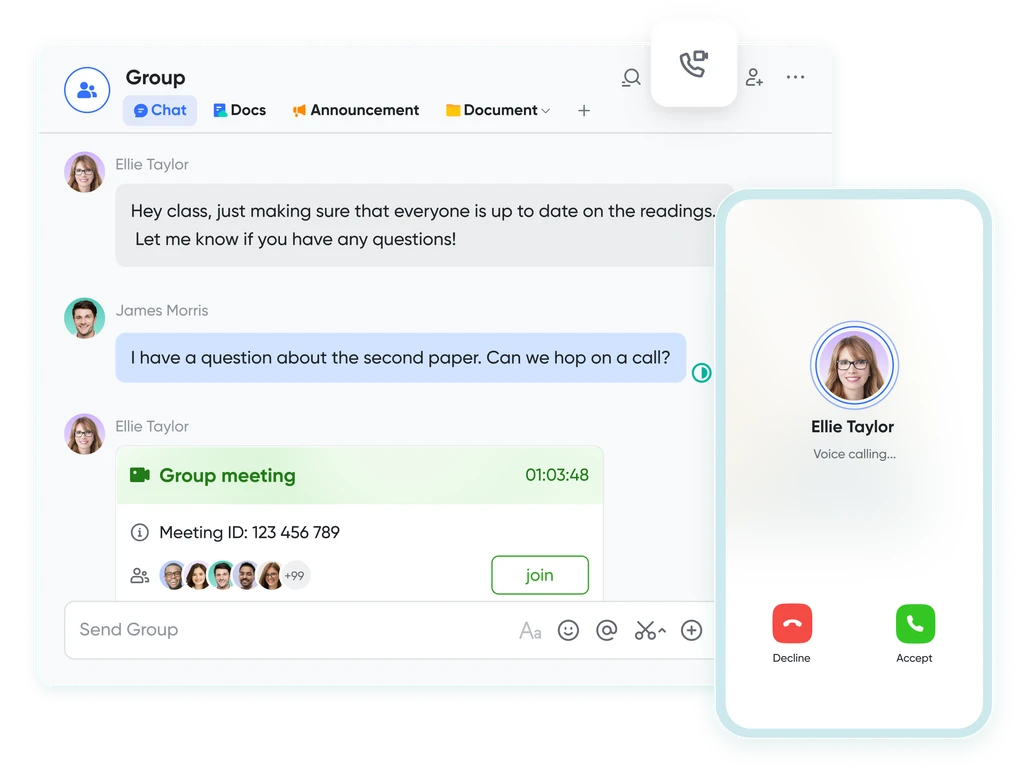
Share live documents instead of just screen views. Participants can navigate and edit simultaneously within the video call window, even while on the move.
Shift your focus to engagement, not note-taking
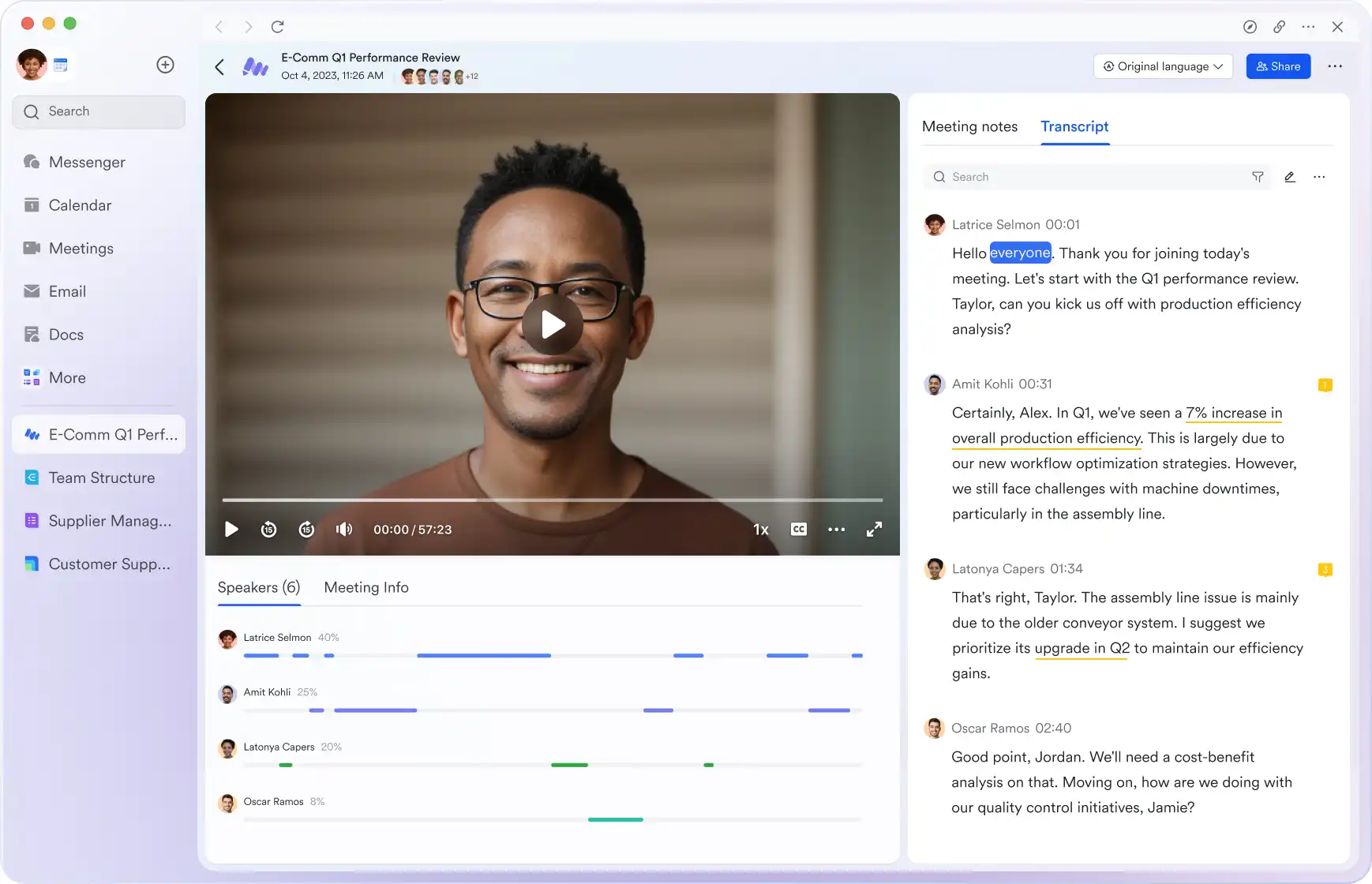
Lark Minutes automatically converts video meetings into transcripts, facilitating easy viewing, searching, and collaborative editing. Stay in the loop asynchronously, even if you can't attend the live meeting. Lark Minutes for meeting minutes support translation into 10+ different languages.
Break language barriers in communication
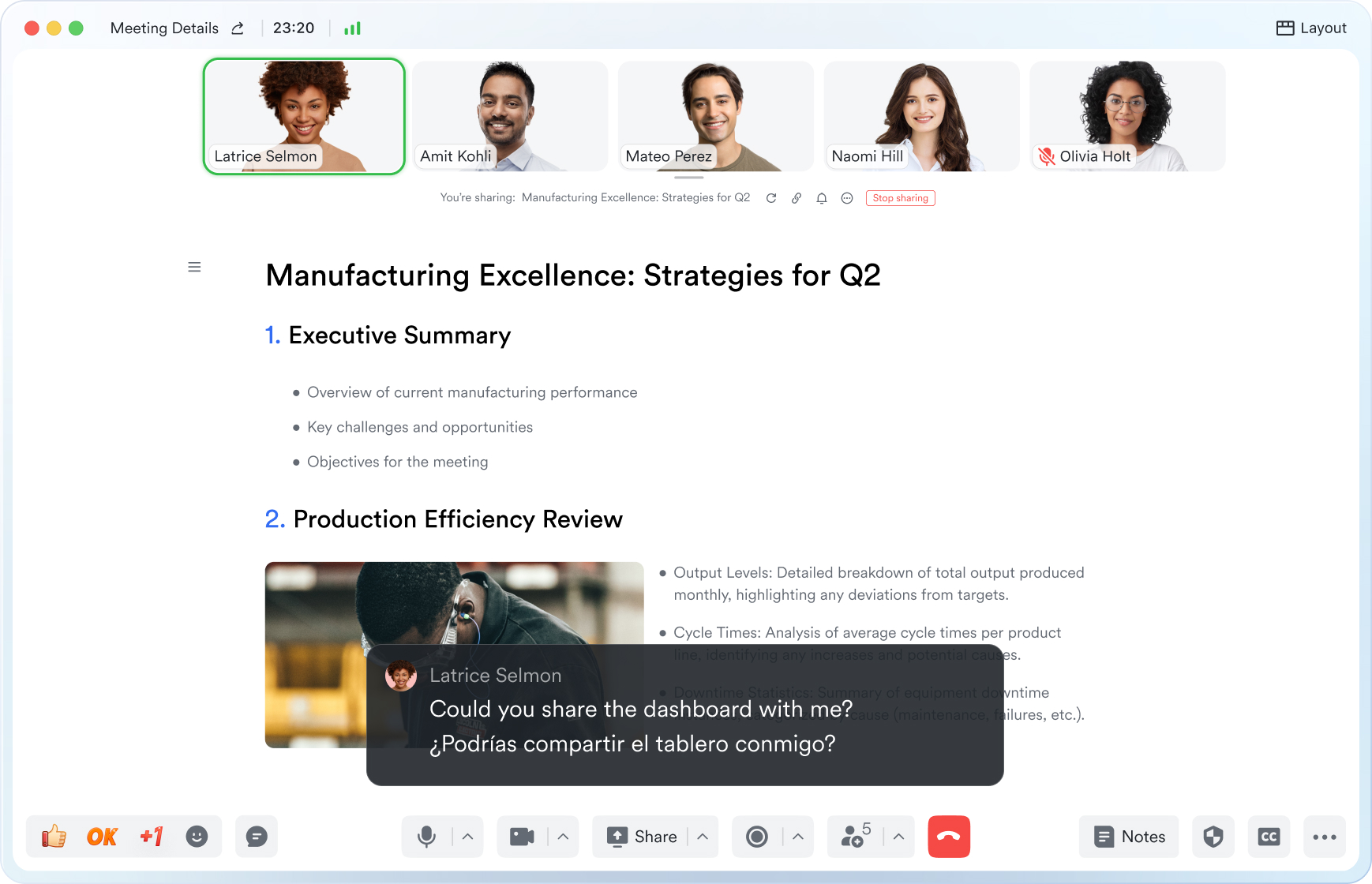
Lark Meetings provide real-time translation for subtitles, allowing individuals from diverse backgrounds to express themselves in their native languages. Ensure every voice is heard, regardless of geographical location. Live subtitles currently support translations from English, Chinese, and Japanese to 10+ different languages. See more translation feature in Lark.
Connect with larger audiences
Host dynamic online meetings and events accommodating up to 1,000 participants, with the flexibility of up to 50 breakout sessions for intimate group discussions within the larger meeting context. Try more Lark features for free.





